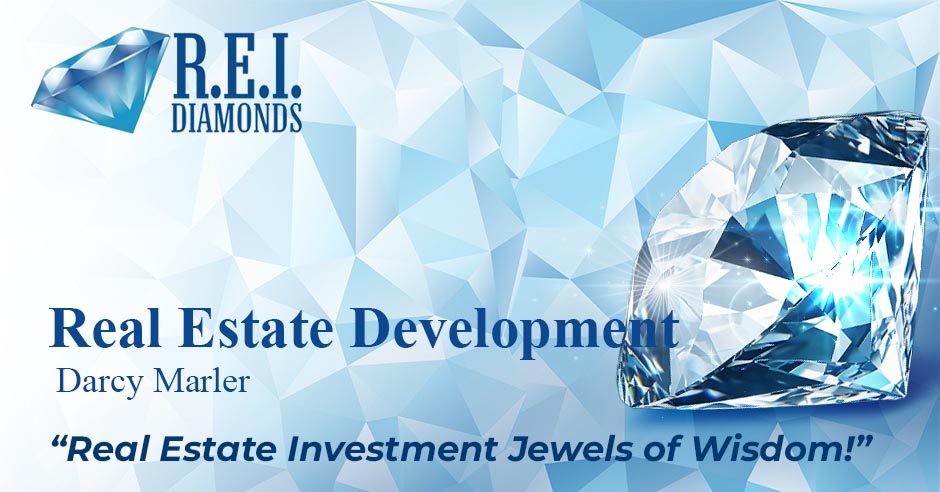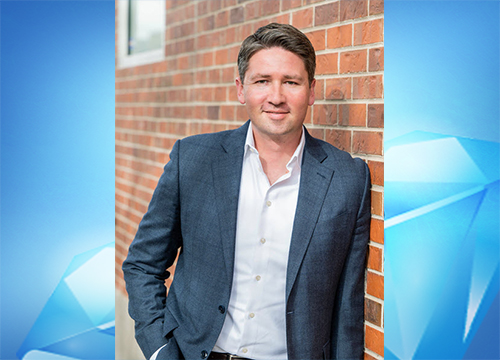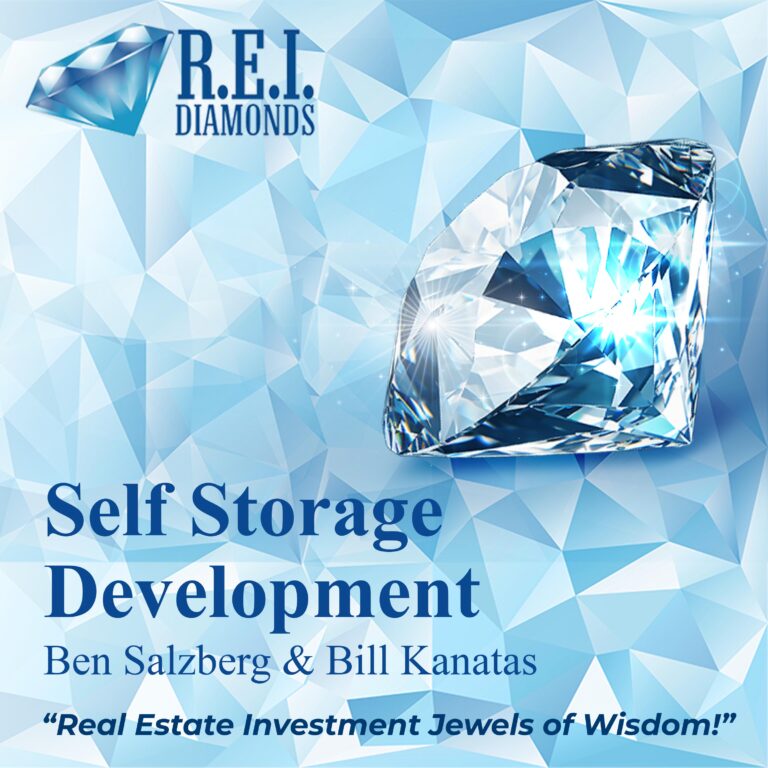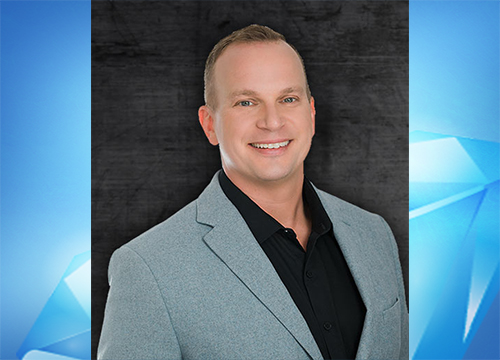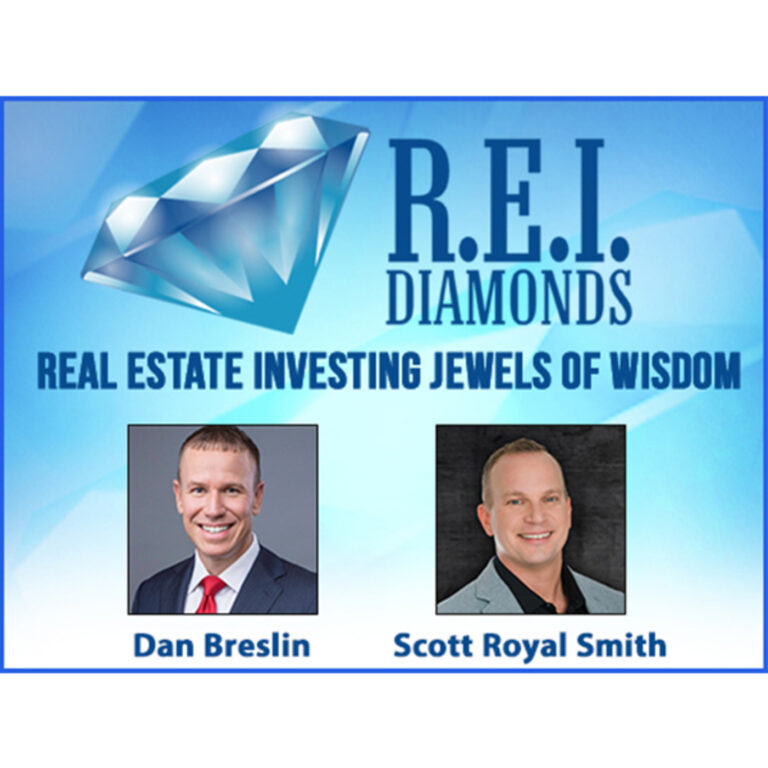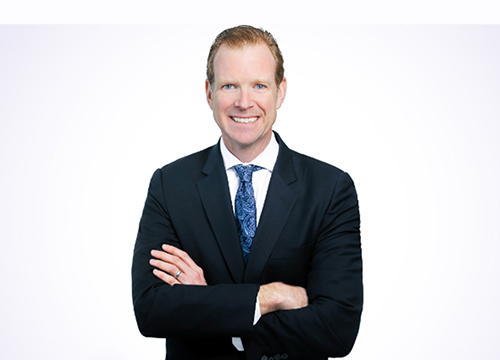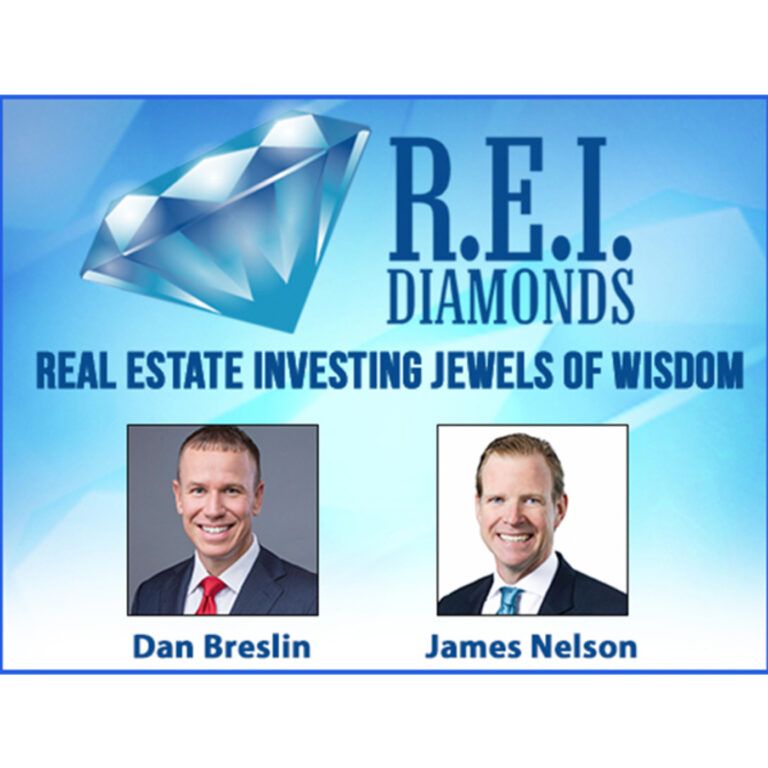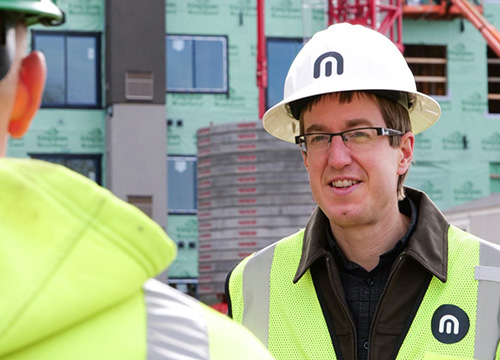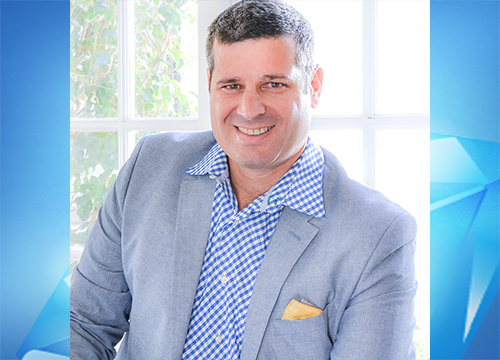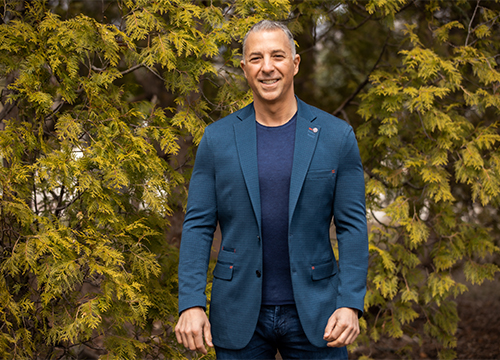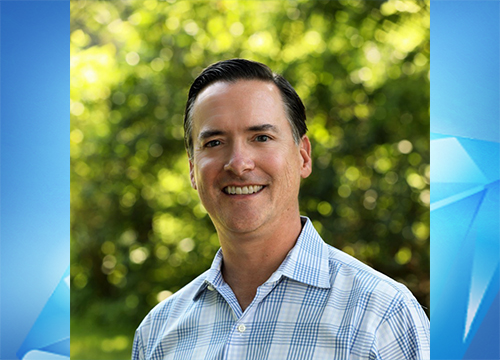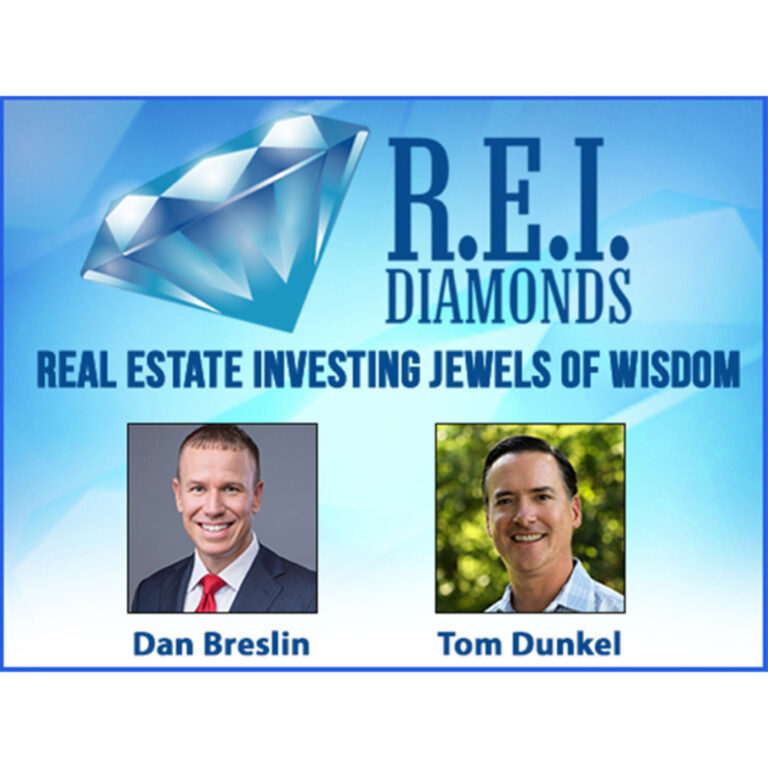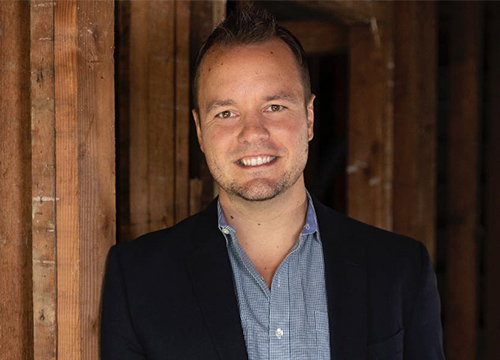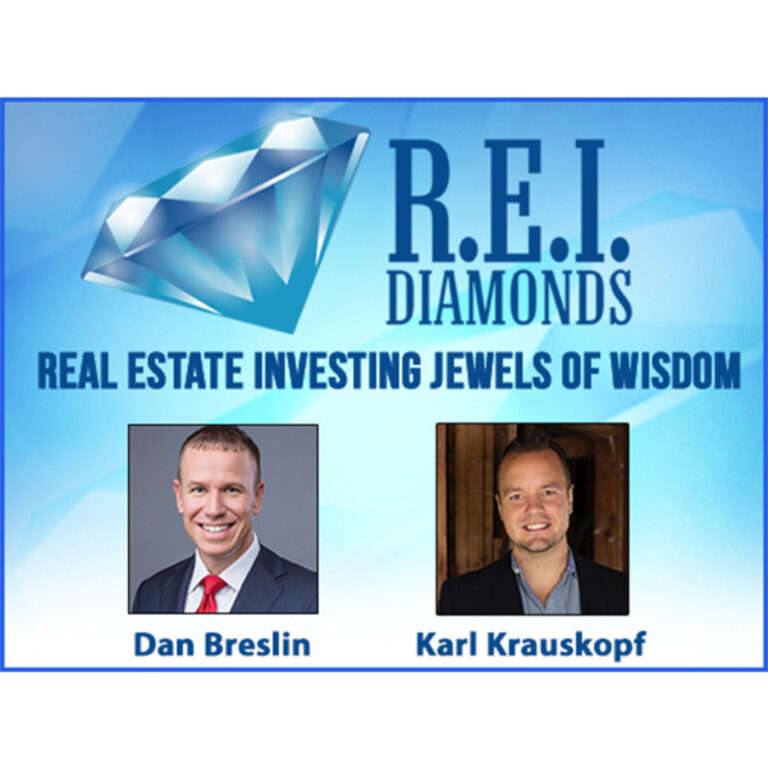Guest: Darcy Marler is a seasoned real estate investor and developer with over two decades of experience in flipping houses, rental properties, land development, and new construction. From an MIT graduate to a successful real estate entrepreneur, Darcy’s journey has been marked by valuable lessons and insights. Passionate about transforming raw land into subdivided lots ready for construction, Darcy specializes in building and flipping houses, duplexes, and small multifamily properties.
Big Idea: In this episode, Darcy Marler delves into the transition from fixing and flipping houses to land development and new construction, stressing the need to align real estate strategies with personal preferences. He outlines risk mitigation and profit maximization strategies, emphasizing the substantial benefits of new construction, including higher returns, better tenants, and efficient management. Darcy highlights advantages such as ease of financing and incentives for developers addressing the housing crisis. He underscores opportunities for smaller investors in smaller-scale projects like multifamily units or residential development. Understanding market demand, leveraging financing, and exploring exit strategies are key takeaways for maximizing returns in real estate development.
This episode of The REI Diamonds Show is sponsored by the Deal Machine. This software enables real estate investors to develop a reliable & low-cost source of off-market deals. For a limited time, you get free access here.
This episode is also sponsored by Lending Home. Lending Home offers reliable & low-cost fix & flip loans with interest rates as low as 9.25%. Buy & hold loans offered even lower. Get a FREE iPad when you close your first deal by registering here now.
Resources mentioned in this episode:
Darcy Marler & I Discuss Real Estate Development:
- Budgeting and Risk Management in New Construction (3:31)
- Philosophies on Holding vs. Selling Properties (10:02)
- Pre-Selling Land vs. Building Spec Homes (15:54)
- Identifying Potential Land for Development & Subdividing (18:21)
- Evaluating Opportunities in Aging Neighborhoods (23:16)
- Benefits of New Construction for Rental Properties (36:38)
- Importance of Demographics and Location in Real Estate Investment (45:36)
- The Significance of Partnerships and Operational Support in Real Estate Ventures (49:48)
Relevant Episodes: (200+ Content-Packed Interviews in Total)
- Lease Option – Rent to Own Real Estate Investing with Adam Zach
- Reverse Wholesaling with Kent Clothier of REWW
- Josh Inglis on Building New Construction & Selecting Rentals on Chicago’s South Side
- How to Buy Land with No Money Down with Mark Podolsky
—
Watch the episode here
Listen to the podcast here
Real Estate Development With Darcy Marler
Darcy Marler, welcome to the REI Diamonds Show. How are you?
I am doing very well. Thanks for having me on. I appreciate it. This is great.
I was excited by the topic. I think our audience will be equally as excited. Most of us are probably fixing and flipping houses. We are interested in buying and selling real estate. We would improve said real estate to get to that profit. I think that our discussion around land and development, and making that transition will be a very much well-received topic by the audience and by myself. Darcy, would you mind giving us the background and the career evolution to get where you’re at now?
I was an actual IT guy way back in the day, about 23 years ago. I got tired of that, so I wanted to get into real estate. I started flipping and doing long-term rentals, and that led to some land development and new construction. I’ve done all the strategies. I had close to 1,000 tenants and 240 renovated units and written a couple of books. I’m now doing a bit of everything. I keep coming back to new. I like new. I like being creative. I like knocking stuff down instead of fixing it up now. That’s where I’m at now.
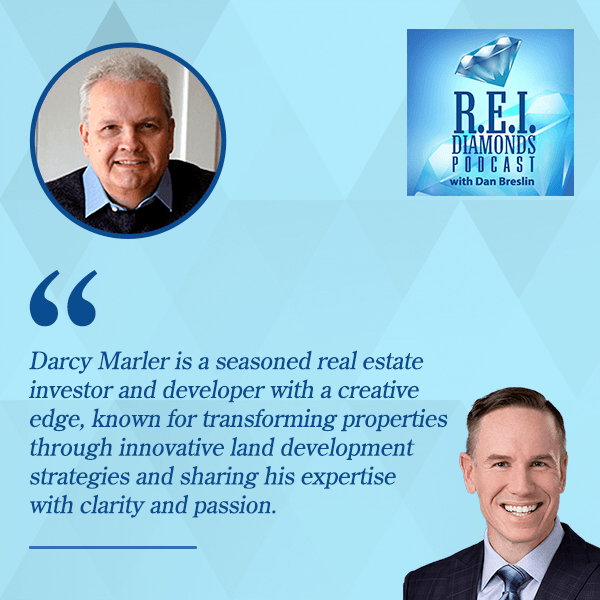
Biggest Lessons From Early Development Deals
Why don’t we start with an example then? This could be your first development deal, or you can not do that one if that one’s not maybe the biggest lesson. Maybe you could pick one that came with a big lesson that helps us expand our vision from single-family fix-and-flip or buying duplexes that exist to ground-up new construction.
The first one is perfect. I had this 1950s bungalow. I was going to flip it. The person next to me passed away, so I bought that as well. I said I’ve always wanted to build. What does that look like? I moved both of the old houses off. I didn’t even demolish them. I sold them. They got moved off. I split those two lots into four.
I made sure all four lots were serviced, and then I built four new homes. I loved it. It was exactly what I wanted. The big thing that I’m all about, too, is matching your personality to your strategy. If you’re not enjoying what you’re doing, what’s a better fit? I love the creativity. I love the pride of watching the stuff come out of the ground. I think it’s awesome.
Match your personality to your strategy. If you’re not enjoying what you’re doing, what’s a better fit?
You say it so calmly now, and I have friends who are developers bringing stuff out of the ground. Some of them are calm, others maybe not so much. How do I say it? I feel like some of the developers have this innate riverboat gambler mentality. I feel like it’s hard to, at least for me, because I’ve never brought something out of the ground where I was a sponsor. I’m a partner in the fourteen developments for self-storage, but I’m not the guy who’s budgeting that. I am a money guy.
Budgeting And Risk Management In New Construction
I don’t have the emotional barrier. Personally, I do have an emotional barrier. I could do a $150,000 flip, get architects, the whole thing. We can get that done, no problem. I have this mental block of getting past dirt. Is it going to be $400,000? Is it going to be $500,000? Is it going to be $600,000 to build said property? Am I going to be able to sell it otherwise? It feels like a humongous risk to put the shovel in the ground when I’m not clear on that budget on the front end. Maybe we could pull on the thread of the first deal. You’ve got four houses coming out of the ground. How did you budget for that new construction, or did you take a riverboat gamble?
They say God protects the naive and the stupid, so I’m not sure which one I was. Let me go at it a little bit another way. As flippers, we have to finish. You can’t half finish a flip and expect to sell it for any profit. In this world, let’s say every building, whether it’s residential or commercial, whatever, starts with grass and ends with a building. There are all these things that have to get done. We don’t have to do the whole thing. There are three parts. There’s the permitting, entitlement kind of thing. There’s the pipe in the ground, getting the infrastructure in, and then there’s the physical build. You don’t have to do the whole thing. You can pick one of those pieces.
I did the whole thing with that story I told you, but once I had the four units or four lots separated with four different sets of pipe in the ground, I could have sold four serviced lots. There are a lot more entry and exit points in this world that don’t exist maybe in the flip and rental world, and that can take some of the scariness out of it because I’ve got a clear exit point. Let’s say I’m going to go, and I’m going to do the whole thing, and then the economy changes, and interest rates go crazy, and costs go crazy.
There are multiple exits. I can sell it to a builder because his internal costs are less than mine would be, so maybe it doesn’t pencil out for me anymore to finish that final product, but it still makes sense for the builder. I can sell it and make a lift from changing zoning and density and usage, or whatever, or putting some pipe in the ground, knocking down the old house. There are lots of exit points, which may help you feel better and help mitigate the risk along the way.
Even when we flip houses, we’re throwing darts at the number. I think it’s $60,000. It ends up being $82,000. That’s okay. We sold it, and we got a little luck in the market, and maybe we made the profit we targeted, or maybe more. Usually, my exit price, Darcy, on the product, a house, whatever, I’m going to go low. If I think I can get $525,000 with luck, maybe I’m building a deal on $485,000 or $500,000. Maybe I’m so conservative that it sells for $550,000 when it’s all said and done. We did a little nicer job. We got lucky, the spring market, the market moved, etc.
On the front end, we’re throwing a dart at that renovation budget still. I’m not price per square foot, making sure the electrical is $8,000 versus $11,000. We roughly know it’s going to be $8,000 to $10,000. We’re using $10,000 when we come up with the budget. Did you have any exact budget for these four houses when you were building?
It is because I’ve done a bunch of flips in my day too, and the worst thing is you don’t want to go into the wall because you don’t know what scary things are behind the wall. Here, we’re going to tear down that old house anyway, so we don’t care. It’s a lot easier to get a fixed budget to do this job, this is going to cost me this much because it’s brand new out of the gate. With the four houses, I went to an actual quantity surveyor because I was my onsite supervisor guy, even though I’d never built a house before. I wouldn’t necessarily recommend that. Here’s the budget, and then you’re out there getting quotes.
The worst thing in flipping is going into a wall because you never know what scary things are behind it.
Here’s what it costs to tear down the house, or in my case, move them off. Here’s what it’s going to cost me to bring the utility lines in from the street, from the city. Here’s what it’s going to cost to frame. Here’s what it’s going to cost to throw the HVAC system in. It’s a lot easier to get cleaner quotes on that than I found with the flipping world.
You were committed at that point. You did. You already owned the dirt. You knew you were going to do it. At that point, it was bidding out the job efficiently versus underwriting the deal on the front end to figure out if that one works. You’re not going to call and get 15 or 20 quotes together before you make your offer. You have to have some gut feeling for how much each is going to cost to build.
In that case, my fallback position was it’s too hard, it costs too much, whatever. I’ll flip both these houses now. I had that luxury. Even if I hadn’t bought the houses yet, let’s say I was looking at a house that I think is a better teardown than it is a renovation, the great thing about it is it’s linear. Things have to be done in the order. You can’t put on the roof before you put on the walls. Utility pipes have to go in.
It’s linear, and that makes it like a to-do list. Psychologically, it can be all intimidating for us that this is hard, but it’s one step at a time. You get the quotes. I can call a couple of demolition companies, what’s it going to cost to tear down that old house? Perfect. Check. Call the city, what’s it going to cost to hook up to the city waterline? Check. It allows us to move through and make that whole process simpler for us but also less intimidating. It’s not throwing darts, as you say.
Got you. I have friends who, we’re talking $20 million profits, and I feel like they threw darts on what they were going to put in the property, and it worked out for them. At some level, all of us in real estate are throwing darts at some point and taking a risk. That’s what risk’s all about, in a sense. You do have to take a little bit of a gamble. Hopefully, we’ll be educated. On the four-lot package, what was the total duration from the purchase of that first house to the sale of the final fourth house? I assume you sold them, not rented them?
I sold them. I prefer to sell instead of keep stuff. The actual knocking down of the first house to finishing the fourth was about ten months. I was in and out within ten months.
Built the fourth house in ten months and then sold maybe 4 or 5 months later, settlement?
I had them all pre-sold. The whole thing, let’s say, was permitting and all that. Let’s call it sixteen months from cradle to grave.
Philosophies On Holding Vs. Selling Properties
That’s pretty quick. You’ve mentioned two philosophical things that I want to highlight for readers. We get, a lot of times, a buy and hold everything forever philosophy, and then we get an everything is for sale. I’m more of the everything is for sale kind of guy. We did 331 deals last year. All of them are sold and gone already, and I do hold a handful of rentals in my portfolio, but they’re a savings account.
In that aspect, I’d be lying if I said I’m a buy-and-hold forever. I try to be more of a buy-and-hold forever with my portfolio. I don’t know why. I think it’s more work for me to try to slice and get out of them versus keep renting them out, and the management company handles it. Why is it that you prefer the sell everything versus the buy and hold forever?
I get bored easily. The other thing too that 23 years has taught me is no strategy works all the time, everywhere in every economy. Stuff changes, as we’ve seen in the last few years. I don’t like the concept of, “I’m going to get in bed with a JV partner and own this apartment building for twelve years.” I barely know the guy, and I don’t know what’s going to happen in twelve years, and all of a sudden, I bought it at a 1.9% interest rate, and now I refinance and my mortgage payment is three times what it was. I don’t like that. I’ve got Darcy-isms, and in and out quick is one of my favorite ones.
No strategy works all the time, everywhere, and in every economy. Things change, as we’ve seen in the last few years.
As I said, those are the three parts of development I would recommend picking one, do the entitlement bid, get the lift from changing zoning density and sell, or buy land in this state, put the pipe in the ground and sell service lines, or buy land that’s already serviced and build the fourplex or tenplex, whatever you’re going to build, so that you can get in and out quick. This is because rising interest rates are a big deal. If you’re going to hold something over twelve years if you’re in and out in sixteen months, it’s a factor, but it’s not anywhere near as big a factor as if you’re holding it long-term. I find these strategies are a lot more recession-proof to get in and out quickly.
I got into real estate in 2006. I was 26 years old. The market was at its height through 2003, 2004, 2005. I knew that, like my parents’ house, I think they paid $89,000 for it, and houses on the block were selling for $150,000 to $185,000 or something like that. It was a long time later. We bought it in 1987. To me, real estate prices didn’t feel like they should move that fast. When I got in, in 2006, everything was inflated beyond where it should be. You got to get out as quick as you possibly can.
We started flipping and doing those kinds of things, and it turned out the market did go down from 2006 to 2013 when it bottomed out, various different places and points in the timeline around the country, I’m sure. We’ve been on a pretty good appreciation run. I don’t know if it’s because I got in as the bubble was bursting last time, or maybe the Darcy-ism and the sell everything quick is the right methodology. Where I’m going with it is that real estate has always felt like a game of hot potato to me. I’m flipping a house, and that thing is hot. I’m losing sleep.
The construction is going on. “Can we get it done faster? Can you guys work on Saturday? How about Sunday afternoon?” I’m exaggerating a little bit with my pressure on the contractors. I want to be out of that house as soon as I possibly can. It’s a hot potato. I got to pass it on to the next. If someone’s going to live there, it’s not a hot potato for them. That’s going to be their home and their location for a very long period of time. I’m on board with the Darcy-ism of selling it quickly.
I’m 57. I bought my first personal residence when I was twenty, in 1987, and I paid 12.5% interest. I thought I was getting a deal because three years before, it was 16%, 18%, 20%. I thought this was awesome. It’s a perspective.
Pre-Selling Land Vs. Building Spec Homes
You’re right about that. The other philosophical thing you touched on here, which I don’t even know if it’s a Darcyism or not, is pre-selling the houses. I had Brandon Cobb, a friend of mine, on the show, I think I’ve had him on twice now, and his original philosophy around pre-selling versus finishing it and selling it was that he wanted to pre-sell. That jammed him up during the inflationary period because he had already sold and locked in some prices, so he got into a little bit of a jam. He flipped to the other side of that philosophy, which is, “I’m not pre-selling anything because I want to make sure I can continue to ride the market.” That probably was a good strategy for the last 38 months, give or take.
We’re now in probably a little bit of a different market. It would be worth noting that Brandon then moved on to the thing you mentioned before. You’ve got these three components, permits and entitlements, adding new utilities, selling finished lots, or building vertically and coming out of the ground. Brandon had mentioned now, on that second episode, that he’s more partial to running numbers 1 and 2, buying the land, getting the permits, putting in the infrastructure, and then selling those lots, sometimes in an entire package to the end builder. Did you go back and forth? Do you sometimes pre-sell and sometimes not pre-sell? Where’s the Darcyism in that, if any?
A couple of things. I tend to not like the pre-selling of the final house to the end people that are going to live there because then they’re picking colors, and they’re painting my ass as I’m trying to build this. You are better off building spec in that sense. At least you’re not fighting the owners, “I want to move that wall.” It’s too late. I already got the building permit, the wall has to be there. I’m doing a land development deal in Houston. The goal is to pre-sell the final finished service lots. I’m not going to build the houses. I’m going to create service lots to sell to the builders before you’re even in the ground.
That gives you security in terms of, “Here’s the end price, and here’s the dates.” They’re going to take blocks of so many every three months. That makes your lenders happy and makes everybody happy. It goes back to your personality, what are you more comfortable with? I like the security, maybe, of having the final number there. In that scenario you talked about, I got my butt kicked in the 2008 recession doing a 36-unit development where I was doing the land and the builds of the houses. Pre-sold probably twenty of them, so two-thirds. The recession hit, and I was scrambling. There was a massive boom before that. You’re seeing run-ups of both costs and revenue. It was a roller coaster. In and out quickly.
Analyzing Houston’s Real Estate Market
I vaguely remember the 2008 inflation at the gas pump. We were complaining about the price of copper, but I didn’t have the scale in my career at that point, from 2006 to 2008, where I was affected by it like we were this time around, doing a higher volume of deals. History repeats itself. Pre-selling the land is a smart idea. We have a project that we have an LOI for. I think it’s 16 to 20 townhomes, and we have a rezone clause in there, and that would be pre-sold to them before we have to enter this rezoning. That might be an ideal scenario. How big is that in Houston? Could we pull apart that example a little bit?
What I did there is, it’s still in the works, rather than buy the land and then try to raise the money, I went the other way. I did what’s called a blind pool, or a blind raise, and I raised some money. I’m now on the hunt for the land. Again, 23 years of experience. I’ve built close to 50 houses, duplexes, and small multifamily. I’m okay with it. I like it, but I don’t love it. I love the dirt bit.
I’m going to focus on what I like. We’re looking for 20 to 50 acres of land that we’ll subdivide into smaller lots, whether it’s city lots, half-acre lots, or larger, and then we’ll get the builder set up. The way that works is you’re typically looking at a 15% deposit of the final agreed-upon end sale price once they’ve done their due diligence.
At the time when all the drawings are done, and the permits are in, they know that this is going ahead. That’s a great way of also getting funding as you’re going through. I now have to have that much less financing with my construction loan. That now saves a ton of money in interest costs and whatever. That’s another benefit of maybe figuring out the end piece before you’re throwing darts at the wall.
Will you take that 20 to 50-acre parcel through the utilities and sell finished lots there?
Yeah. Piping in the ground, the internal road, sidewalk, subdivision, the light poles, the fire hydrant over there, and then selling it to one or more builders.
Have you successfully got a couple of those closed so far?
Not this one, but over the past 23 years, I’ve certainly done that. As I said, when I was first starting out, I had to do the whole thing. You’ve got to do the whole thing. It’s like flipping, but after a while, pick the bit you like and do that bit.
A hundred percent. We’re flipping houses. Chicago is a great market. Philly is a great market. Atlanta is a great market. There are great markets all over the country, and there’s a need for what we do. In Philadelphia, there are a lot of products available where I’m not necessarily flipping in the lowest-end areas, let’s say, in the Philadelphia region, there in the city. I would guess you have investors who are making $30,000 to $40,000, maybe $50,000 in profit if the contractor guy’s in there offsetting his labor costs. There’s probably some higher-end stuff, and they’re making more money there as well.
In Atlanta, the renovations are significantly lower cost. In the Philadelphia market, we’re talking about 1900s to 1920s products that are going to need $40,000 to $80,000, depending on if the guy’s doing the work, to make the $30,000 to $40,000 to $50,000. In Atlanta, the product is newer. An older product is built in the ’50s or the ’60s in Atlanta, and then you have a lot coming up through the ’70s, ’80s, ’90s. Maybe you put $20,000 or $25,000 in there for your average flip, and then your upside is probably $40,000 to $50,000, give or take. The South Side of Chicago is interesting.
It’s always been an interesting market to me because we have so many products where you’re going to spend $80,000, $90,000, or $100,000 in renovations. When I first moved from Philly to Chicago, I was shocked when they were telling me how much, “We got to spend $100,000?” Back then, it was $80,000. It’s now $100,000 or $110,000, something like that, to renovate these bungalows. The upside there is it’s $70,000 or $80,000. There’s so much product and inventory.
Best Entry Points For Real Estate Developers
I don’t know how long that’s going to last but to flip houses on the South Side, you’re going to have challenging neighborhoods and a certain contractor, and some contractors are not going to be willing to go down and work in these areas. The product is there, and there’s a volume of deals available to flip houses in the city of Chicago. It’s a great market. I’m curious. We’re in 2024. The interest rates are high.
If you were talking to one of those investors in any one of those three markets, who is making those kinds of spreads, what would be your advice to them as far as here’s what might work for you to consider going into the development space? Would it be ground-up new construction? Would it be fine multis? Would it be skip right ahead to the land development? Where would be the best transition for that flipper to proceed into development as a career?
If life is working well for you and the numbers are working, then fine. I’m more talking to the person who’s not happy with their rentals or their flips or whatever. This isn’t what I signed up for, sorry. A couple of quick facts here. The average lifespan of a wooden structure in North America is 70 years. Brick is 90. That puts us in 1954 and 1934. Anything 1970 and newer, keep that. That’s a flip for sure.
Of the ’40s and older, tear it down. Why are we keeping those? Obvious exceptions for the historically or architecturally valuable, but that’s a small percentage. Most old crap is old crap. The ’50s and ’60s is your call, what you want to do. For the most part, the problem with what we’ve been taught over the last 40 years in real estate education is we’re taught to fix up something. That’s all we know. Fix up an old building, keep it as a rental, flip it, Airbnb it, rent, and whatever. We need a building.
Sometimes you’re sitting there as a flipper and you go to that 1910 and say, “I can’t, I don’t know, this is too far gone. I don’t know what to do with this,” and off you go to the next one. As the inventory starts to age, we’re always taught the values in the building, and to create value, you have to add value to the building. As the inventory ages, the value more and more is in the land. Can you bring out the value of the land?
We’ve always thought that the value is in the building, but as the inventory ages, the value is in the land.
For example, most of your readers probably, as they’re flippers, if they come up with a vacant lot, they don’t know what to do. If they come up with a 1910 piece of crap that is a teardown, they can’t deal with that either, so off they go. If you tear down the 1910 piece of crap, now you’ve got a vacant lot. What can we do with a vacant lot? That’s part of an educational process to learn.
What’s great about that is that now that separates you from almost all the rest of the competition that ever read a real estate investing book, took a course, or listened to a podcast. We’re all looking for the same product. If you know how to deal with vacant lots and old crap, that sets you apart because most investors don’t know what to do with that. That would probably be the, as you’re dealing, like I said, in Chicago and Philly and some of these, Baltimore, some of these old places, it’s got a lot of that old product.
Let’s stop fixing it up. I used to be the fix-it-up guy. I’m now a tear-it-down guy. Let’s tear it down. What you come back with, instead of one-for-one, because with a flip, typically, we fix it up, we had one unit before, we got one after. If we did do tear down before, we tore down the old house and built one nice house. Let’s come back with a duplex, fourplex, or a sixplex. Let’s help the housing crisis. Let’s help the missing middle that we’re talking about all the time with a nicer, newer product.
Let’s revitalize. Let’s stop the urban sprawl as we’re heading out and spending all that money as taxpayers, on new roads, new schools, and hospitals. Let’s come back in and revitalize some of these older inner-city neighborhoods with some new products. It is because everybody likes new. Nobody likes to live in that 1930s burr. Let’s come back with the new stuff that people want.
We notice in these areas, South Side Chicago, a lot of the areas in Philadelphia, Atlanta, it’s a night and day difference in Atlanta by the West End and the Beltline area. They put a walking trail in the railroad loop going around Atlanta. It’s been a project going on for a long time. It’s a great example of bringing the area back to life. When we started in 2016 in Atlanta, you’d walk around and maybe there was one occupied house on the entire block.
Maybe now there’s 1 or 2 vacancies, and maybe there’s a handful of them that are in decrepit shape, and everything else like brand-new renovations. They weren’t necessarily tearing those down, but I think what we’re seeing is a lot of these challenged areas are benefiting from the housing shortage, and they’re seeing the investment, and there’s no other options. People are willing to move there, willing to buy there, willing to own there.
Site Selection Criteria For New Construction
The question is about the new construction. If I’m looking at this 1910 house in the neighborhood, Darcy, and this is what we run into a lot of times in the area, there are no other comps for new construction in this town, in the school district, or the zip code. Is that an automatic pass? Should I be now looking for neighborhoods that do have some new construction, or is there a case to be made for being somewhat visionary and providing somewhat of this unique product and a build-it-they-will-come mentality? Fill me in on a site selection or the site pass criteria.
I like the precedent. I use the analogy in World War I, it’s nobody wanted to be the first guy going over the hill. Make sure some other people have done it. You come into a neighborhood, and what we’re looking for, like I said, because of the age of the houses, I specifically target neighborhoods that are 1960s and older. That was the outskirts of town in 1940. Those are what I’m looking for. I want precedent there. It is because there’s typically a NIMBY, not in my backyard, installation. In some of these older neighborhoods, people bought this house 30 years ago for $40,000 or $50,000. This is a retirement. They’re scared.
I want somebody else to have fought that fight with both city hall and with the local community so that they’re allowing their whole house to come down and a duplex to come up, or maybe some triplex or fourplex scenario. That’s what I’m looking for. In the other situation, where there isn’t precedent, try to stick to the borders, stick to the main roads, the high-traffic arteries kind of thing. It is because the city will usually almost always approve permits for higher zoning, and higher density, on the main traffic.
The neighborhood community group could care less. They care more about what’s inside. It’s almost like a wedge. That’s how you get there. We’re going to build something new on the main street. It’s harder for the neighborhood to block, or the city to block, if you bought the house right next door. You got approval. How come I can’t get it? It wedges itself in there. It’s two ways to look at that, but you never want to be the first guy over the hill, that’s for sure.
In the small development space, meaning 1 to 4 units, buying a single-family house, tearing it down, is the competitive advantage, or the edge, finding a single-family where 2, 3, or 4 units can be built on the lot? Is that part of the strategy?
Yeah, because I think most people with land development, new construction, they have it in their head that’s for the big companies on the outskirts of town. They’re going to buy 400 acres and put up a thousand homes. As smaller investors, we can get into this world too, by focusing on that one old house on the city block, the 50-foot frontage city, regular city lot.
The other thing, too, is that I think it’s a mistake to assume that most people who want new, that they want a new 2024 build, only want to live in the suburbs. Lots of people want to come back to where there are high walkability scores, where there’s existing infrastructure, and where there are mature trees. Lots of people like that inner city vibe.
There isn’t the product, as you said, like most of the stuff, because all we’ve been taught, is how to fix stuff up. If we knew what to do with the old stuff and the vacant lots, I think we, as smaller investors, there’s a real opportunity for us to come in, and then we’re not competing against the deep-pocket developers in the outside of town.
Navigating Development Without Sales Comparable
It’s logical. I have two friends working on a similar strategy. They would get areas in the Philadelphia market where these lots are practically free. It’s a thousand bucks, $2,000, or $5,000, or $10,000, you’re getting a lot. They would rezone that lot, I believe, to build either two, I guess it would be three-flat, so triplex, maybe a quad on there. They would build them, and there were zero comps for new construction. There’s not a lot of that 2, 3, 4-unit product in the city of Philadelphia. There’s enough, there’s duplexes that are around, but they’re not like they are in Chicago, New York City, Boston, cities like that. It is because he had no other sales comparables, he would simply rent them all out, Section 8 program, and then refinance based on the income.
He’d built himself this wonderful portfolio of buy, build, rent, refinance, and recycle the cash. He’s now got all this wonderful product that he built that has low maintenance, that’s probably got a long lifespan ahead of him. That was how he was able to get around not having comparables. It is because he’s doing that, there’s zero competition because he’s not selling them once he’s done. No comparable sales are popping up. Everyone else wants to fly in and capitalize and drive the land values up. I have another friend who does magnificent design. I ask myself, or I observe, some visionary developers win on design.
At some of the highest levels, they’re taking risks with money that’s not theirs, family office money, and they’re building these trophy projects, and they work out. I don’t know how long they work out because we’re seeing some of these trophy-project-type things cycle back through the system and foreclosure as we speak, some of the multifamily stuff across the country. His strategy was like it’s a neighborhood where there are million-dollar homes, stuff is probably selling for $600,000, $700,000, or $800,000, and maybe the new construction is selling for above a million. Maybe he’s putting a second story on something and using the existing foundation.
Sometimes he’s building completely brand new. It’s an amazing product. It seems like there’s no price too high for someone’s willingness to pay. There’s some limit on it, but there’s not a lot they can compare it to because it’s such a magnificent product. Whereabouts would you fall on that spectrum of design versus functionality? The four units I was talking about are probably, that’s builder’s grade, the cheapest thing we can do. You have bedrooms, bathrooms, closets, a kitchen, not much else. On the high end of the design spectrum, you have floor-to-ceiling glass windows and a magnificent and stunning property when you pull up. Whereabouts would you fall on that scale, and where would you maybe advise somebody to get in the game?
There’s always the opportunity, and it depends on the neighborhood. If it’s a nice neighborhood, maybe the opportunity is to knock down an old house and build a nice house in its place. There’s certainly a market and profit to be made there. Probably most of your readers are at the smaller investor level. What’s great again about getting into this is, as I said, we knock down the old house and let’s say build a fourplex. The exit strategies could be, I build it, I refinance it, I rent it up, I refinance it, or I keep it in my own portfolio.
Option two is, I sell the fourplex to another investor that wants multifamily. As we said, there’s a ton of competition for everybody looking for multifamily. One of our real estate investing brethren is going to buy that as an investment. We could also turn that into four condos and sell them as four individual condos in certain places where you’ve got basements, so maybe it’s a two-story duplex up and then two down. That’s your fourplex.
You can sell one half to one young couple that lives there and then has a mortgage helper in the basement, and then there are other exit strategies. As we said, if the cost got too high during the builds, you can sell it out at the various stages up till there. It’s those multiple strategies that I like, for the smaller regular-size investor to hedge their bets as they’re going in. You can run the numbers, sold as a building, sold as condos, kept in my own portfolio, what do these numbers look like?
You can make those decisions before you even go on the ground. The other thing, too, in a lot of places now, because there’s this housing crisis, all three levels of government, there’s incentives for a lot of time to incentivize a multifamily build. Anything over typically five units, government rebates, incentives, better tax or better mortgage rates, and higher loan-to-cost on the build, you’re able to get some of these opportunities as well that aren’t available in a typical flip or rental world.
Have you ever done any projects where you’ve got a government subsidy or some kind of alternative financing? It sounds like a lot of paperwork and a lot of, I don’t know how to get that.
Typically, what happens is it’s on the final build. Let’s say land development, it’s not necessarily there. You have to physically build the final one, but you can get up to a 95% loan instead of a 75% loan. It’s 95% loan to cost. Those are available. Typically, you can port those into a 40 or 50-year mortgage. I understand most of your audience is flippers, but if you’re looking for rentals, and you want to be a landlord to build this, there are a ton of benefits to having a new rental portfolio, a better class of tenants, and they qualify easier.
They’re willing to pay more. The building’s brand new. Your maintenance budget is next to nothing because of all of that. Your management is much less and a lot easier to manage. They’re easier to insure. A lot of these 1910 things, you can’t insure them anymore, asbestos and the aluminum wiring and all this stuff. They’re easier to mortgage too because we’ve got to scrape to get a fifteen-year lifespan expectancy out of this building.
A new build is going to last a long time. So much easier to insure, much easier to lend. Throw that all in. It’s easier for governments to get behind that as well. It could be a local, a municipal thing, here in this town, we’re looking for housing for lower-income or seniors. It could be a statewide thing. It could be a federal thing. It could be tax rebates, incentives, cheaper loans, these kinds of things that incentivize us because we’re trying to get rid of the housing crisis here. It’s a big deal. Lots of things are available for us.
You’re right about that. The products I own are also old, all brick. I think I have one that was built late 1800s that might be stick-built. I’m replacing wooden footers under this part of the foundation and probably wish I didn’t buy it. I think I’m okay still in the profit zone, and maybe I should sell it. The allure of owning a product that would even have been built in 2010-plus, as an investor, I wish that all of my products in the portfolio were that newer product, but I could never get the numbers to work out with the low cap rates that they trade for.
If I’m looking at a 2, 3, or 4-unit property, I’m fighting with the house hacker. That is a red-hot market. It’s a 2, 3, 4-unit building house hacker, meaning someone’s going to live in one unit and rent the others out to offset the mortgage. They can pay more than the investor can pay. It’s a good thing. A lot of them are getting FHA financing and starting off their careers with the right move.
Balancing Design Vs. Functionality In Development
I wish I would have done that myself. If I’m going to build a four-unit, and maybe it’s not me who does have contractors, maybe it’s somebody who you alluded to a little earlier in the show, Darcy, where they tried a few flips, maybe they broke even, lost a little money on it. It’s not working out how they want to.
How would you advise an investor at that experience level? Let’s say they’re going to build that three-unit triplex somewhere. How would you advise them when we get to the construction phase to bring that out of the ground? Are we talking about finding the right GC? Are we having them go down and look at the permits pulled? What’s going to be the 1, 2, 3 step action item for them to find the right construction partner to build that out?
I was the onsite supervisor guy. I was the project manager of my own property all the time, and I would not recommend that. Let’s back up a step, and think of ourselves as investors. We got to learn some new stuff. What is the highest and best use? What is zoning? What is density? As I said, we’ve been taught the values in the building. The value is more and more in the land. How do we increase the value of land? There’s some new stuff that we need to learn.
Geography is important because there are certain places, certain municipalities, where they’ll approve your application for a zoning change in two months, in other places takes two years. Where we invest is important. Specifically, to that fourplex, what’s different about the pricing there, if you think about it, again, we’re used to one unit for one unit. We’re not adding, that’s new to us here. The cost of the lot, the old house, or the vacant lot doesn’t change whether you’re building one new unit or ten. You can split that cost amongst the new units.
In general, ten units is better than eight, which is better than six, which is better than four. A way to increase land is to have more units. The other thing too is certain things like your architectural costs. For your architect to sit there and design a duplex, he’s not going to charge you twice as much to design the fourplex. Some of the costs aren’t split. Some of the costs change, but not on a prorated basis based on the number of units.
So far, part of my action item is I probably should consider building 6, 8, or 10 at a time versus 2, 3, or 4 because I’m getting a little more cost benefit. Am I hearing that right?
Yes. How do you do that? We have to understand zoning and density and how that works. I now find this 1910 teardown, it’s on a 50-foot lot, and the zoning is a single-family home. What is realistic for how many maximum units I can get on there? Let’s say the house next door to me is a 1910 teardown too, going for the vacant lot, going for $1,000. Before I ignored that because I didn’t know what to do with it as a normal flipper, if now I got 2, now I got 100 feet of frontage, how many units can I put on that? Your costs go down based on that.
Builders are more apt to be interested in you because now you’ve got more land downtown. In most cities, it’s hard to find large continuous areas of land, not outside of town. You’re coming in. If you can learn about land assembly and we can figure out if I put 2 together, now I got 50 feet of frontage, maybe the play again in the entitlement world is to split that up into four 25-foot lots, sell that, three 33s, or maybe you put pipe in the ground and those, and now you sell serviced lots. Maybe you go through and you amalgamate those 2 lots and you put a little mini apartment building together, or you do some townhouses. We have lots of options. I love options.
I love more tools in the toolbox instead of flips, rentals, and Airbnb rentals, and that’s all wholesaling. Let’s learn different ways to separate us from the competition so that we’re all not just fighting for the same thing and dealing with it the same way. In general, at some point, we’re going to be the investor, we’re going to find the deals, put the deals together, but then you hand it off to your team, your architect, your civil engineer, planner, they’re going to do the back and forth with the city. If you stay there with the paperwork and the entitlement world, perfect. If you’re going to do work on-site, hire builders, project managers, general contractors, whatever works in whatever situation. I think you’ve got more value as an investor trying to find the next one.
It sounds like you might be advising me not to buy the building and get the project to a point, and then skip the construction risk. Maybe it sounds like your heart might be more in the dirt aspect.
It depends. I think of it this way, if I’m doing paperwork only, I’ve got like three tradespeople. I’ve got a lawyer, I’ve got a civil engineer, and I have a surveyor. If I’m putting a pipe in the ground, maybe 12 or 15, it takes 50 trades, material suppliers, and people that are involved to build a house. It’s not that far off to do flips and the BRRRR strategy. There’s a lot of churn. When you’re doing flips, one of the bad things about flips, as I found out, was that all these different tradespeople are making money, and hopefully, there’s some at the end for you too. Lots of churn.
The more you do, the more risk there is in terms of time, but also more and more people sticking their hand out. That’s why I say if you’re going to build, perfect, nothing wrong with that, but try not to do the whole thing. Buy the land that’s already serviced, and properly permitted. You can start building, I can knock down that old house. If the old house is empty, I can knock it down tomorrow and go ahead. In and out quickly. That’s some of the things that 23 years have taught me.
Importance Of Demographics And Location In Real Estate Investment
My final question before we get to our wrap-up here, number one, what is the market that you invest in now and why? Number two, what would be your next second and third choice markets? Maybe you’re already there. Maybe those would be ones you would consider.
Because we’re adding units, as I said, in the past flips, rentals, it’s one for one. In this world, we’re adding units. We’ve got to make sure we’re where people want to be. Demographics play a larger role. I pay a lot of attention to domestic migration, not necessarily foreign immigration, but how people are moving around the states, and they’re moving from the Californias, the New Yorks, the Chicagos, and Bostons down towards Texas, the Floridas, the Carolinas, the Nevadas kind of thing.
Make sure you’re in the right area statewide, lower taxes, no state tax in those places, a real quick turnaround time usually for permits, and a lower cost to build in a lot of these states because of the cheaper labor down South. That’s the thing. I like Texas, for example. One of the things I don’t like is the up and down and up and down. I like consistency. The population in Texas is supposed to double by 2050. I like that. That’s as a developer. You pick Texas, there are now 3 or 4 major cities. I like Houston for a bunch of reasons.
I know it best, for one thing. There are pros and cons to every strategy. The downside of maybe development is you’ve got to do some upfront thinking and planning first because we’re adding units. We’ve got to make sure that people are going to buy or rent our units when we’re done. We can’t assume that in my town it’s a great place to be, because maybe my town sucks. Maybe my town’s anti-development, they don’t want me there. The permits and fees are huge. It’s going to take me two years to get stuff. We’ve got to be able to do that upfront homework first to make sure we’re in a great place.
Development requires upfront thinking and planning. You can’t just assume people will want to buy or rent your units.
Makes sense. Is Houston your home market? Is that where you live?
No. In the late ’90s, I was a computer guy, and I lived and worked in South America, Venezuela, Mexico, Colombia, and Brazil. My client was in Houston. I made a bazillion trips back and forth to Houston. I’ve seen the growth. When I was there in 2001, let’s say for IT, they had the one-ring road, and they were three-quarters done the second. I come back in 2022, I’ve been there about three or four times in the last two years, they’ve done the second ring road, and they’re now 90% done with the third. Consistency of growth is what I’m looking for as a developer because I’m adding units.
Recommended Books And Podcasts For Investors
Makes sense. Last couple of questions here as we wrap up. Darcy, do you have any books or shows or other YouTube videos, or anything inspirational that you might share with the readers?
I do a YouTube video every week. It’s my name, Darcy Marler Channel, and then I’ve written four books. I got my first book given to me in real estate when I was fifteen, so over 40 years ago. I’ve watched Real Estate Education. Again, flips, rentals first. I wanted to be different. Nobody’s talking about this other stuff. As you can tell, I’m passionate about this development stuff. Every week, I put out a video related to this world, and then I’ve written four books on real estate that are different. I love this. I’m passionate about it.
Wisdom For Aspiring Real Estate Developers
You go back to 2001, you’re in IT, and knowing everything now, what would be the crown jewel of wisdom you would share with yourself back in 2001 when you were visiting Houston and it was not quite as grown up as it is now?
Match your personality to your strategy. I think, like I said, we get into real estate investing, and all there is, am I going to be a landlord? Am I going to be a flipper? Wholesale, Airbnb, whatever. Make sure that matches your personality. Maybe you don’t like tenants. Maybe you don’t like dealing with nasty flips. Part of the bad side about flips is you’re always on the conveyor belt, trying to find the next deal. You’re always on the hunt because you’ve got to keep your trades busy. Does that match your personality? Are you staying up late at night, worrying about it not getting done quickly enough?
A disadvantage of flipping is being constantly on the conveyor belt, searching for the next deal. You’re always hunting to keep your trades busy.
We’re told that property management’s the answer, it’s hands-off. No, it’s not. Rentals aren’t. Learn both the pros and the cons of all the strategies first, and then pick one that aligns better with your own, what you like, what you don’t like, and your strengths and weaknesses. Try to get an operational partner. I was the lone wolf guy forever. I see a real benefit to having someone strong where you’re weak and vice versa. Anyway, some general advice there.
Do you have some other contact information or websites you’d like to share with the readers?
I’ve got a Linktree. A Linktree is an app that lets you put everything, the YouTube or Amazon and all that stuff. It’s Linktr.ee/DarcyMarler. You can find me there and go down the rabbit hole about development and new construction, land assembly, upzoning, entitlement, and all that kind of stuff.
The Kindest Gesture Ever Received
My final question is what is the kindest thing anyone has ever done for you?
I was sitting there in Venezuela one time, and I had to pay an exit tax to get out of the airport. It was a long line. I’d already gone to the front. I didn’t have the right number of pesos or deliveries. The guy behind me paid on my behalf. I paid it forward, and I paid it forward a little bit later, but that was cool. I liked that.
What was the thought you had in your mind when you realized at the front of the line that you didn’t have the right change or whatever it was? What was the thought that crossed your mind?
I’d miscalculated. I had some, but not enough. I was like, “Christ, now I’m going to have to go to the ATM and get something. I’m going to have to go to the back of the line. I’m going to miss my flight anyway.” The guy behind me is an angel. Saved my life.
I like it. I got a couple of pages of notes. I had a blast recording the episode, and I appreciate you coming to the show.
I had a blast too. I love this stuff. Nobody else has talked to me about development. Let’s change that and let’s bring some new stuff to the world.
—
The REI Diamond Show is sponsored by Diamond Equity Investments, a private equity firm focused on buying and selling residential and commercial property throughout the United States. If you are an accredited investor seeking double-digit returns, you can sign up to review Diamond Equity’s passive investment opportunities at www.FundRehabDeals.com. If you’re an investor who is seeking deals that you can buy, fix, and flip, please go to www.DealsWithROI.com.
Important Links
- Darcy Marler on LinkedIn
- Darcy Marler on YouTube
- Darcy Marler on Linktree
- Diamond Equity Investments
- Fund Rehab Deals
- Deals With R.O.I
- REI Diamonds
- REIDeal Machine
- REI Line Of Credit
Relevant Episodes
- Lease Option – Rent to Own Real Estate Investing with Adam Zach
- Reverse Wholesaling with Kent Clothier of REWW
- Josh Inglis on Building New Construction & Selecting Rentals on Chicago’s South Side
- How to Buy Land with No Money Down with Mark Podolsky

